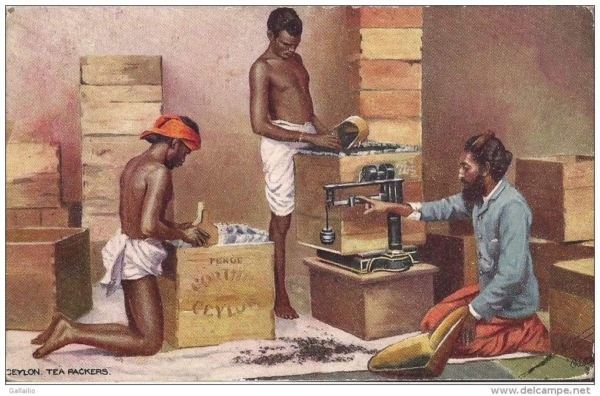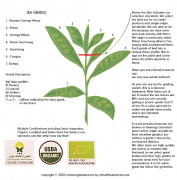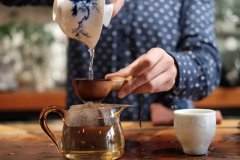Where does Wuwa black tea come from? What is the difference in taste between Wuwa black tea and Ceylon black tea?
How is Ceylon tea grown? Tea cultivation in Sri Lanka adopts the "contour planting" method. In contour planting, tea plants are planted along contour lines of the land, usually on slopes. More than one million people in Sri Lanka are engaged in tea cultivation because the cultivation process requires excessive labour. This process requires skillful picking of two leaves and one bud, which has fragrance and aroma. The process of plucking hair is usually done by women. Sri Lanka is one of the few countries where tea is picked by hand rather than by machine. If the machine is used, the quality of the tea leaves will decrease because all the leaves are not intact. The leaf-picking women were very efficient, they were able to pick quickly and set a goal of 15 to 20 kilograms per day. There are 11 tea growing areas in the country, the most famous of which are Uva, Nuwara Eliya and Dimbulla. Other tea growing areas in Sri Lanka include Badula, Galle, Haptara, Kandy, Mathulata, Ratnapura, Ruhuna and Udapselawa. What are the main sources of Ceylon tea? Uva is the most famous tea growing area in Sri Lanka. The black tea it produces has a unique sweetness and exotic aroma. This tea can be brewed with milk. There is also some white tea production in the Uva region. Nuwara Eliya is the highest tea-producing region in Sri Lanka. It is located in the center of the island, west of Uva and north of Dambulla. Nuwara Eliya's soil produces teas with delicate, floral and light, but brisk flavors. Timbura is a tea growing area in central Sri Lanka. It is the southernmost of the three famous regions. As a hillside area, the terrain varies greatly with altitude. Some of the teas produced here are mellow, some are refined, but most are mellow in taste. How is Ceylon tea processed? Tea plantations in Sri Lanka are very particular about the quality and value of processed tea. After picking, the tea leaves are taken to a cool place to be weighed and then sent to a factory for further processing. Factories are usually built close to plantations to save on transportation costs. The tea leaves are then taken to the top floor of the factory and placed in large tanks to wither. This process removes excess water from the leaves. After withering, the leaves are rolled up, twisted and separated. Then roll the leaves in both ways. After rolling, they are spread out again, starting the fermentation process by exposure to heat. The fermentation process varies with temperature and humidity. Therefore, adjusting the temperature, humidity and time of fermentation is an important process. This largely determines the final taste. Then an oxidation step occurs and the color changes from green to brown.

This leads to the final step, heat passing through the combustion chamber, so that no further action can take place. Baking helps retain the flavor that has developed. The tea leaves are then classified according to their texture and size, an important step. It should be noted here that no artificial flavors are added during the production process, so the tea produced here is 100% authentic. Multiple inspections are carried out to ensure that the tea meets expected standards. and then shipped to many places around the world. Pure Ceylon tea produced in Sri Lanka has a lion logo on its packaging. This lion symbolizes the purity and originality of Ceylon tea. The Sri Lanka governing body, the Sri Lanka Tea Board, closely monitors the use of the lion symbol. Tea plates follow strict inspection procedures. The tea passed can also use the slogan "Pure Ceylon Tea-Sri Lanka Packaged". Its name and logo are recognized worldwide as a sign of quality. What does Ceylon tea taste like? Ceylon tea tastes vary greatly depending on the location and elevation of the plantation. Although Sri Lanka is a small island, it has some variations in elevation. Climate, sunlight, rainfall, and plant species also vary with altitude. Sri Lanka is famous for growing many different forms of tea in one area. However, a cup of traditional Ceylon tea is full in flavor, bold and lively, and has plenty of tannins. It also has a hint of citrus. Its slightly pungent taste sets it apart from other teas on the market.
Important Notice :
前街咖啡 FrontStreet Coffee has moved to new addredd:
FrontStreet Coffee Address: 315,Donghua East Road,GuangZhou
Tel:020 38364473
- Prev

Where can I buy authentic Sri Lankan Ceylon black tea? How to cook Ceylon black tea without astringency
What kind of Ceylon tea is best with iced tea? Now that you know how easy it is to brew cold, you may be tempted to prepare iced tea at home. Looking for the best Ceylon tea to make iced tea? Almost all kinds of tea, black tea, green tea, white tea and brewing tea can be used to make iced tea. However, we highly recommend some stronger flavors.
- Next

What is Natural Black Tea? the Story and Development path of Tea Origin and simple Formula sharing of mixed Tea
For all the tea lovers in the world, the word tea is one of the most beautiful words. Its magic is to make you crave it. Of course, this is why tea is considered to be one of the most popular drinks in the world. As we all know, tea is the most popular drink in the world after water. Whether it is black tea or green tea
Related
- Detailed explanation of the proportion of gold gouache in hand-brewed coffee? What are the Gold Cup Guidelines?
- What is the difference between the gold label rose summer and the red label rose summer in Guixia Village? Are Rose Summer 1931 and Gori Rose Summer?
- Cudi stores ban other brands of coffee?! Netizen: No problem
- Is it better to make coffee cold or hot? Why is it recommended to drink hot coffee?
- Lucky people collapsed! The store ceiling is full of AI surveillance cameras?!
- Law Enforcement Bureau? Mixue Ice City enters Zhengzhou BRT platform!
- Heavy! Nestlé has been exposed to consider selling blue bottle coffee!
- Compensation of 270 million yuan! Starbucks has been charged with violating labor laws more than 500,000 times!
- What are Xizhao coffee beans? Why did they become champion beans? How to rush to the manor on the dividing line in Colombia?
- What does channel effect mean in coffee? Why are there holes in the coffee powder cake?

